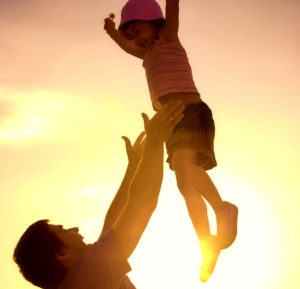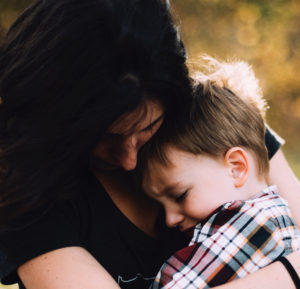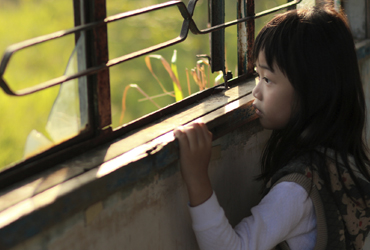Early Childhood Trauma
Realize the Impact...Build Resilience
empowering trauma-informed families, communities & schools
Trauma’s Legacy Impact on the Brain
Trauma is defined as an “event outside normal human experience”. These events are generally emotionally painful and distressing, and overwhelm a person’s ability to cope, leaving him/her powerless. Feeling powerless is an important concept when trying to understand trauma – especially as you apply it to trauma in children.
Many think of trauma as the result of a specific “event”. But early childhood trauma is just as likely (more so actually) to fall into the realm of chronic traumatic stress, especially in situations where children are exposed to repeated neglect, abuse and maltreatment. While most of the public recognizes war, physical violence, rape, natural disasters and sexual abuse as potentially traumatizing experiences, few recognize the significant impact that long-term neglect or repeated verbal abuse and poor early childhood care can have on a child’s emotional health and their neurological development.
There is a growing body of evidence from neurodevelopmental research that shows traumatized children’s brains actually develop differently than those of emotionally healthy children. The brain chemistry is altered (increased cortisol, increased adrenaline, then eventually decreased adrenaline). And the actual brain structure can be adversely impacted. Researchers, such as Dr. Bruce Perry, have reported for more than a decade about the neurodevelopmental differences of children subjected to chronic traumatic stress.
WHAT’S A TRAUMA?
Complex Trauma
Families parenting “at risk” children – those who have been removed from their original caregivers, those who were subjected to abuse or neglect, those who have endured painful medical procedures— may not be aware of their child’s exposure to trauma. So trauma, and its impacts, may not be something parents (and the professionals advising them) immediately consider when trying to figure out a child’s troubling behaviors.
But chronic early childhood trauma has lasting impact and can indeed be at the center of many psychological, emotional, sensory and neurological problems.
Trauma Theory teaches us that when experiencing stress or a threat (perceived or real), the brain has three possible protective responses – fight, flight or freeze. The midbrain area is activated by the “trigger” and responds by increasing production of the powerful hormone: cortisol. While cortisol can be protective in true life-or-death situations, in situations of chronic stress, where it is continuously released, it has corrosive effects and can damage or kill neurons in critical regions of the brain. This is especially harmful in a developing brain. The subsequent behaviors will be either fight (rage, lashing out) or flight (running away or withdrawing) or freezing (dissociation).
Chronic early childhood trauma (called Complex Trauma by some) is generally misunderstood. Many believe that children, especially infants and toddlers, are not nearly as susceptible to trauma as older children and adults. This is sometimes referred to as the “blank slate” view of child development. This view that trauma doesn’t impact infants and young children as severely is partially because a young child’s response to trauma is usually vastly different than an adult’s. If a child is traumatized pre-verbally, the child has no language to help him or her make sense of the situation. If the maltreatment is chronic, then the child comes to believe this is “normal” and does not consciously see themselves as traumatized. Even neurobiological research shows that the “abnormal” physiological changes caused by trauma become chronic and “normal” for children suffering from complex trauma.
The truth is that early childhood trauma is more pervasively harmful and difficult to treat than other types of traumas. Many young children who have been traumatized will not just “get over it”. While children can be resilient, at-risk children from backgrounds of chronic traumatic stress do not have the protective factors in place that lead to resilience.
Recognize ACEs • Realize the impact • Build Resilience
The relationship between traumatic childhood experiences and physical and emotional health outcomes in adult life is at the core of the landmark Adverse Childhood Experiences (ACE) Study, a collaborative effort of the Centers for Disease Control and Prevention and the Kaiser Health Plan’s Department of Preventative Medicine in San Diego, CA. The ACE Study involves the cooperation of over 17,000 middle aged (average age was 57), middle class Americans who agreed to help researchers study the following nine categories of childhood abuse and household dysfunction:
- Recurrent physical abuse
- Recurrent emotional abuse
- Contact sexual abuse
- An alcohol and/or drug abuser in the household
- An incarcerated household member
- A household member who is chronically depressed, mentally ill, institutionalized, or suicidal
- Mother is treated violently
- One or no parents
- Emotional or physical neglect
Each participant received an ACE score in the range of 0-9 reflecting the number of the above experiences he/she can claim (e.g., a score of 3 indicates that that participant experienced 3 of the above ACEs).
The study claims two major findings. The first of these is that ACEs are much more common than anticipated or recognized, even in the middle class population that participated in the study, all of whom received health care via a large HMO. It is troublesome to ponder what the prevalence of ACEs might be among young African American and Latino males, many of whom live with chronic stress and do not have a regular source of healthcare.
The second major finding is that ACEs have a powerful correlation to health outcomes later in life. As the ACE score increases, so does the risk of an array of social and health problems such as: social, emotional and cognitive impairment; adoption of health-risk behaviors; disease, disability and social problems; and early death. ACEs have a strong influence on adolescent health, teen pregnancy, smoking, substance abuse, sexual behavior, the risk of revictimization, performance in the work force, and the stability of relationships, among other health determinants. The higher the ACE score, the greater the risk of heart disease, lung disease, liver disease, suicide, HIV and STDs, and other risks for the leading causes of death.
Adverse Childhood Experiences (ACE) Study
Resources
Links:
National Child Traumatic Stress Network – www.nctsnet.org
SAMHSA – Understanding Child Trauma
Children’s Bureau Fact Sheet: Parenting a Child Who Has Experienced Trauma
How Childhood Trauma is Different from PTSD – Dr. Bessel van der Kolk
How childhood trauma affects health across a lifetime – Dr. Nadine Burke Harris
Top Myths About Trauma
Here are the top myths about trauma and attachment.

7 Ways to Help a Child Deal with Traumatic Stress
Tips for parents & educators
A Trauma-Informed Revolution
Join us in promoting trauma-informed families, schools, communities and more
Recent Posts

Trauma-Informed Parenting: What Adoptive & Foster Parents Can Teach About ACEs
[original version published on Parenting with ACEs on June 5, 2016] There are many adults with low ACE scores who parent children with high ACE scores.

What I Learned -or Remembered- when I Read Brave
1) There are (at least) 2 kinds of being brave. One is an illusion in which we tell ourselves a version of events that we
Maybe It Isn’t Depression?
–by Laura Dennis Therapist and author Hilary Jacobs Hendel has blogged for ATN several times this past year, including popular posts such as “Head, Heart,

Scar Tissue and What the Brain Believes
–by Julie Beem In early October I fell and broke my left knee cap (annihilated it into pieces is a more accurate description). The skillful
Triggers: Providing Emotional Safety in the Classroom
–by Janyne McConnaughey, PhD Every adult knows that there are triggers in life. We often know each other’s triggers, and in toxic relationships, we talk
Developmental Trauma Disorder
In 2009, professionals researching and treating Complex Trauma in children proposed a new diagnosis of Developmental Trauma Disorder be included in the Diagnostic and Statistical

